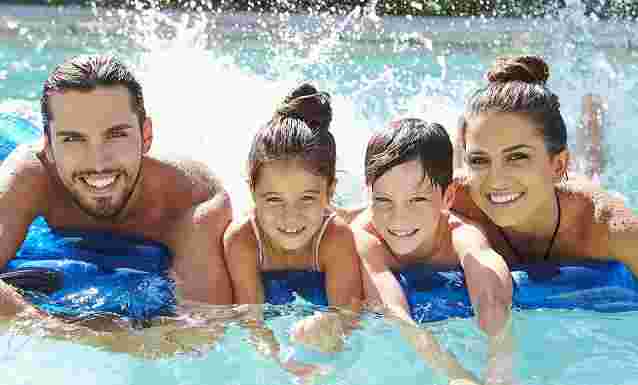45% of Hispanic Kids Can’t Swim – Experts Share Water Safety Tips to Keep Them Safer Year-Round
21 Sep 2020 by Lina Jordan in Ego, Excercise, Fitness, Fitness, General, Health, Health, Home, Pleasure

According to USA Swimming Foundation data, 45 percent of Hispanic children in the U.S. have no or low swimming ability. Lack of swim ability puts children at a greater risk of drowning.
The U.S. Consumer Product Safety Commission’s Pool Safely campaign is dedicated to reducing child drownings in pools and spas nationwide, with a special focus on communities that are most at-risk. As the summer swim season winds down, Pool Safely is reminding families that drowning is a year-round hazard and urging them to take simple safety steps below to help prevent it.
1. Never leave a child unattended in or near water.
Always watch children when they’re in or near water, and never leave them unattended. Designate an official Water Watcher, an adult tasked with supervising children in the water. That should be their only task – they shouldn’t be reading, texting or playing games on their phone. Have a phone close by at all times in case you need to call for help, and if a child is missing, check the pool first.
2. Teach children how to swim.
Swimming is not only fun, it’s a lifesaving skill. Enroll children in swimming lessons; there are many free or reduced-cost options available from your local YMCA, USA Swimming chapter or Parks and Recreation Department.
3. Teach children to stay away from drains.
Do not play or swim near drains or suction outlets, especially in spas and shallow pools, and never enter a pool or spa that has a loose, broken or missing drain cover. Children’s hair, limbs, jewelry or bathing suits can get stuck in a drain or suction opening. When using a spa, be sure to locate the emergency vacuum shutoff before getting in the water.
4. Ensure all pools and spas – both in your backyard and any public pool you may visit – have compliant drain covers.
Virginia Graeme Baker, after whom the Pool and Spa Safety Act is named, died from drowning due to a suction entrapment from a faulty drain cover. All public pools and spas must have drain grates or covers that meet safety standards to avoid incidents like the one that took Graeme’s life. Powerful suction from a pool or spa drain can even trap an adult.
5. Install proper barriers, covers and alarms on and around your pool and spa.
Proper fences, barriers, alarms and covers can be lifesaving devices. A fence of at least four feet in height should surround the pool or spa on all sides and should not be climbable for children. The water should only be accessible through a self-closing, self-latching gate. Teach children to never try to climb over the gate or fence. Install a door alarm from the house to the pool area, and keep pool and spa covers in working order.
6. Know how to perform CPR on children and adults.
Often, bystanders are the first to aid a drowning victim, so learning CPR can help save a life. And once you’re CPR certified, make sure to keep your certification current. CPR classes are available through many hospitals, community centers, or by contacting the American Red Cross.











